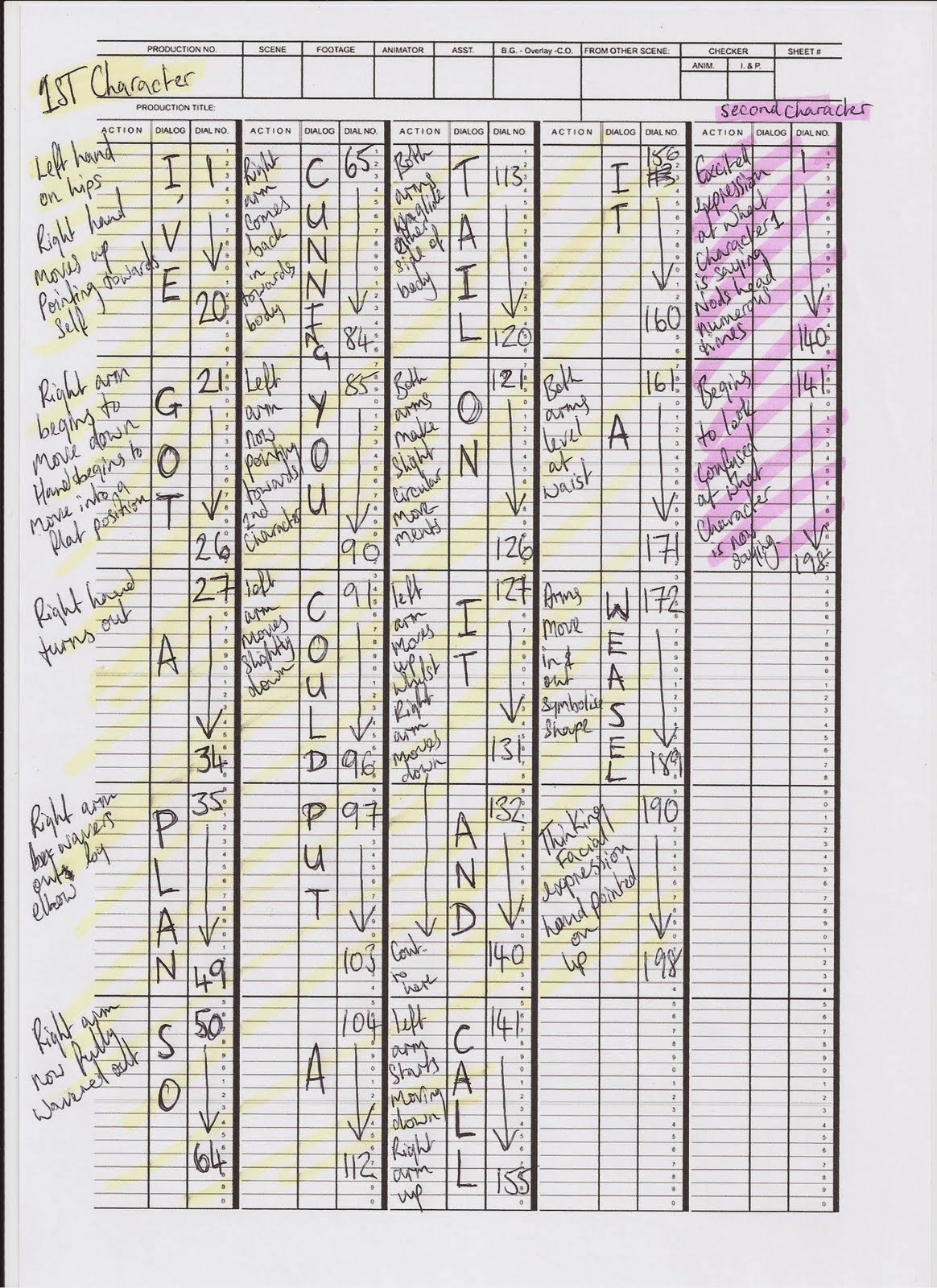When all sound is recorded, the animators now animate with the sound they have on character's talking, their actions, object actions or music playing in the background. This is known as synchronizing.
Synchronizing means to have two things (this being the animation and sound) and put them together, matching them both in time. The animator will use this method to make mouth shapes or phonemes to make a character talk, make their actions react to sound fx or perhaps dance in time with music.
Below is an example of a character talking but shown in ten different pictures.
The animator here has used a phoneme sheet to help them make their character say something, matching up with sound that they were given. When the sequence is complete and exported, the animation will have the character talk with sound to support it.
Sunday, 23 March 2014
Foley
http://www.youtube.com/watch?v=OONaPcZ4EAs
Foley is sound that is recorded behind screen where it is not heard on set. In animation, this method is more commonly used for creating sound effects for creating new and bizarre sounds or recreating a sound. In the picture example, this is the Disney sound team recreating a train sound for Dumbo. As seen in the picture, there is a man on the right of the motion picture with a makeshift train wheel on a track that he will spin around, and next to him is a man with a brush that will help create that train sound more. Oddly enough, there is a man with a banjo that he will play, which proves that most objects, common or small scale were used a lot to help create sound. To help with the explanation of what Foley sound is, the link at the very top shows what foley artists look like in action.
Wednesday, 19 March 2014
Voice Acting
When a character needs a voice, animators will sometimes do the voice but in industries, they often hire voice actors. Most voice actors are usually actors/actresses who would usually be in front of a screen whereas others prefer using their voices. The setup for voice acting is in a sound proof room where no sound can escape, a microphone with a pop mic shield to get sound clearly, and their script. To the left is a picture of famous voice actress Tara Strong with the setup she has been given to record her voices. In front of her is her script she reads aloud into the microphone which has been placed at mouth level. Once her sound has been recorded, the sound team will then send that to the animators for synchronizing (explained in a later blog).
Dope Sheet
Dope sheets are made by animators to indicate where the sound is going to be in frames to help de-construct a soundtrack; this includes dialogue, music and foley tracks. Commonly, there are columns called "Action" and "Dial" and 24 or 25 rows for each second. There are usually more rows, depending on how long the soundtrack is.
The Action column is obvious: its used for planning out where the action is going to happen and also how long it is going to take.
The Dial column is short for dialogue and is used for planning out the words been spoken in that sequence. For foley too, the animator can write down words to represent that sound. For example, if they wanted a "Crash!" sound, they can write out "CRRAAASSSSHHHH" in the dialogue column down the row to indicate the timing of that in frames.
Script
Scripting for sound
Whether it's a live action movie or a animated cartoon, all sound has to be scripted before it is produced. This includes sound for foley and voice acting. Below are some examples of the two scripted.
Foley
Foley is a sound that is made in a recording booth by a person called a Foley artist (Foley is discussed in more detail in another blog). They will act out the sounds to the script in accordance to timing of the footage. Most movies before the 2000s that had recorded foley sounds were noticeable as it would be louder than the actual actor.
Voice acting
Scripts are also made for voice actors who are going to speak their part as their character or even make sounds for a type of foley (a baby gurgle or a monster). Like the script for foley, this has the character's name, their timing and their action that they are performing (so if a voice actor needs to be quiet or loud).
Subscribe to:
Comments (Atom)





